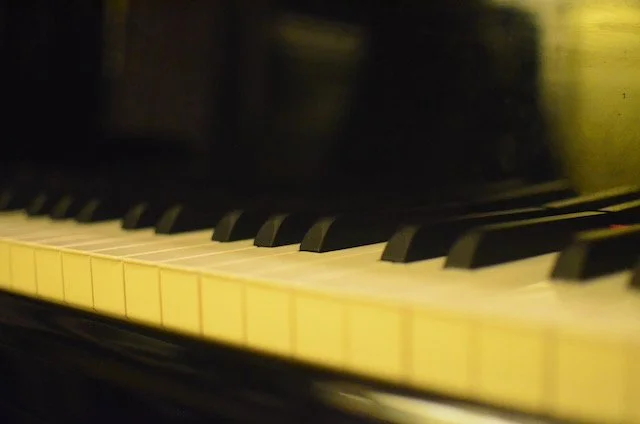A Very Good Place to Start
My students are convinced that the answer to every practice question I ask is “rhythms.” This is not actually the case, but the “rhythms” that they are referring to do solve a whole host of technical and musical problems. We owe a lot to their magic.
I first encountered rhythms in college when I was studying with the formidable Jane Allen, who was widely recognized for her ability to turn an otherwise sloppy technique into something to be reckoned with. Her favorite way to teach scales was using rhythmic patterns of various kinds. “The ‘Longs’ should be very long, and the ‘Shorts’ very short,” she would lecture, gazing at us with her stern, unforgiving gaze. She was, of course, right. However, after years of work with various teachers, I would add another corollary to the Jane Allen Law of Rhythms: The very long ‘Longs’ should be so long that you are able to completely let go of any physical tension AND any sense of anticipation to the next note. In other words, sitting there wallowing in the long note, you should simply be present to that place, not racing ahead mentally to the next tricky passage. After finding your complete unattachment to whether or not you will ever finish the passage, (or even leave the piano bench) there is a moment of preparation and then you flip through the next short note (or notes, depending) before settling on another long note. There you begin again, repeating the process of letting go. It’s all very organic and deceptively simple. But, like any form of meditation, it isn’t really easy at all.
My teacher and good friend William Westney makes this concept the basis of his “scale exercise,” which is simply Jane Allen’s rhythms with a new and more holistic twist. It’s Jane Allen’s rhythms on steroids, the goal being to massage out every possible kink and awkwardness between every long note by analyzing every segment of the scale with a magnifying glass. It is just like Bill to take the old and make it suddenly not only fresh, but Zen to boot.
My students have plenty of trouble controlling their impatience while sitting on a long note. I must confess, so do I. It feels so much more productive to race on to the next grand thing at top speed, polishing off our practice tasks in record time. When my students demonstrate rhythms for me in their lessons, I have to constantly nag at them, “Longer long notes.” “Longer long notes.” “LONGER LONG NOTES!” and still their idea of long is not the same as mine. I sympathize, but nevertheless together we struggle on, trying to reign in our fast-paced lives. Or at the very least, our fast-paced practicing.
So what, exactly are these mysterious “rhythms”? Rhythms are an imposed pattern of long and short notes that can be used in any technical passage or exercise to help erase tension, to assist in physically learning the patterns of notes, and to stabilize one’s security of a given passage. All that, and they have a built-in savings account, too. Every time I practice rhythms, I feel like I am making a deposit into a musical bank account; every performance is like a withdrawal. Enough rhythmic work and I stay safely in the black. Too many run-throughs without recovery time quickly puts me in the red. No wonder I swear by this practice technique so strongly.
Rhythms can be in patterns of two, three, four (or more), but don’t be in too big a hurry to jump into bigger rhythmic groupings. The smaller the grouping the more challenging it is on one’s patience and stamina, but the better the passage in question gets learned. Depending on the situation, these can be done with either hands alone or hands together (I suggest having great familiarity with the former before rushing into both hands). I have used these with scales and arpeggios in traditional Jane Allen fashion, with LH stride bass passages, and with complicated RH licks. The possible situations in which these might be applicable are endless.
Here’s our studio short hand for rhythms:
Long-Short or Short-Long (LS or SL)
Long-Short-Short or Short-Short-Long (LSS or SSL)
Long-Short-Short-Short or Short-Short-Long (LSSS or SSSL)
The trick is knowing which pattern to use. Groups of sixes are especially tricky–you have to decide if the notes are really in groups of three or two. I can always tell an intermediate student hasn’t yet grasped the concept of rhythms if they suggest a three pattern for what is obviously a two grouping. I know there is a school of thought out there that claims that grouping notes in unnatural rhythmic patterns is helpful to the learning process, but I disagree. I match rhythms with their most natural musical grouping according to situation at hand, and save the bigger challenge for finding my inner breath when practicing them.
Just because you might not be a pianist, doesn’t mean that rhythms won’t work for you. I have used them coaching all kinds of instrumentalists and singers as well. There is nothing like them for cleaning up those long melismas in Handel’s Messiah.
The answer to every practicing question may not be “rhythms,” but as my kids know, it’s not a bad place to start.
